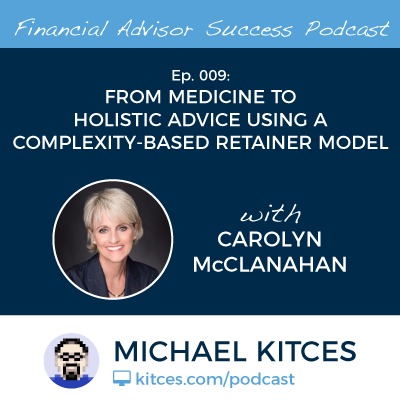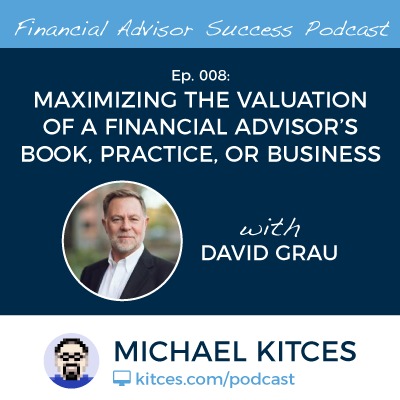Even with today's technology tools, an individual financial advisor can only handle "so many" client relationships, until it's just too many people to meet with, and too many people to keep straight in your head. At some point, every financial advisor hits a wall, where it's necessary to either stop taking on clients altogether, or hire another advisor and begin transitioning some existing clients to free up room to accept more clients. Yet in a business that's built on the foundation of the advisor-client relationship, the actual process of transitioning clients to another advisor can be daunting!
In this week’s #OfficeHours with @MichaelKitces, my Tuesday 1PM EST broadcast via Periscope, we discuss how to transition existing clients away from a senior advisor to a new/associate advisor, and best practices to maximize the odds that the transition is successful and goes smoothly.
Fortunately, if the need to transition clients isn't due to an urgent sale, but simply as a part of the natural growth process of the business, there's time to train and develop an associate advisor, and shift clients over time. Which helps to ensure a smooth process for all involved. My recommendation is that advisors plan to handle the transition as a 3-year process, made up of 3 different steps that I call the three L's: Listen, Learn, and Lead.
During the first phase – the listening stage – the responsibility of the associate is simply to listen. They'll gain valuable knowledge as they watch the senior advisor handle the meeting, direct the conversation, and explain common topics and talking points that come up. During the second year of the transition – the learning stage – it's time for the associate advisor to start talking more in the meetings. Since they have presumably completed their CFP education, they should know their information (even if they don't have a lot of experience delivering it yet), which means the senior advisor can steer client questions to the junior advisor to answer (and then give coaching feedback in a post-meeting "check-in"). Finally, in the third year of the transition – the leading stage – the associate advisor is promoted to a "full" advisor and actually begins to lead the meeting. They set the agenda, kick off the conversation, go through the talking points in each area with the client, and ultimately wrap up the meeting. The job of the senior advisor is to sit and observe – only intervening if it is absolutely necessary, and otherwise giving further coaching feedback after the meeting is over.
This last point is crucial, because undermining the trust the clients are developing with the associate can destroy the transition at this point. If the clients direct a question to the senior advisor, the senior advisor should steer it back to the associate. If the clients ask for the senior advisor's opinion, the senior advisor should affirm the opinion of the associate. And being open and honest with the clients about the transition (in year 3!) is the best way to help the associate advisor ultimately succeed, because it's one more clear affirmation from the senior advisor to the clients of the senior advisor's trust in the associate and the transition. Notably, this also means the senior advisor should be careful to not unintentionally undermine the associate. Beware jokes about an associate advisor's age, and don't call them a "junior" advisor (literally, use "associate" and not "junior"), because these both highlight the associate's relative lack of experience and can reduce client trust.
Ultimately, the biggest determinant of whether clients accept being transitioned to a new associate advisor is whether the existing senior advisor convinces them that the associate advisor really does have the capabilities and expertise to be a good advisor for them! Which sounds easier than it is to convey - because as the senior advisor, you may find yourself feeling very uncomfortable when clients actually do begin to transition, and it becomes clear that they don't actually need you after all. Which is a positive for the business, but can be a personal blow to the ego!
In the end, the reality is that some clients may still resist the transition, and in that case the advisor has to make a business decision to keep them (if the revenue and/or assets merit it), or acknowledge that the client is no longer a good fit and let them go. The fact that you agreed to be their advisor at the beginning does not commit you to being their advisor forever! If you want to grow your business, you have to do what's right for the business.


 Welcome back to the ninth episode of the Financial Advisor Success podcast!
Welcome back to the ninth episode of the Financial Advisor Success podcast! Welcome back for the eighth episode of the Financial Advisor Success podcast!
Welcome back for the eighth episode of the Financial Advisor Success podcast!
